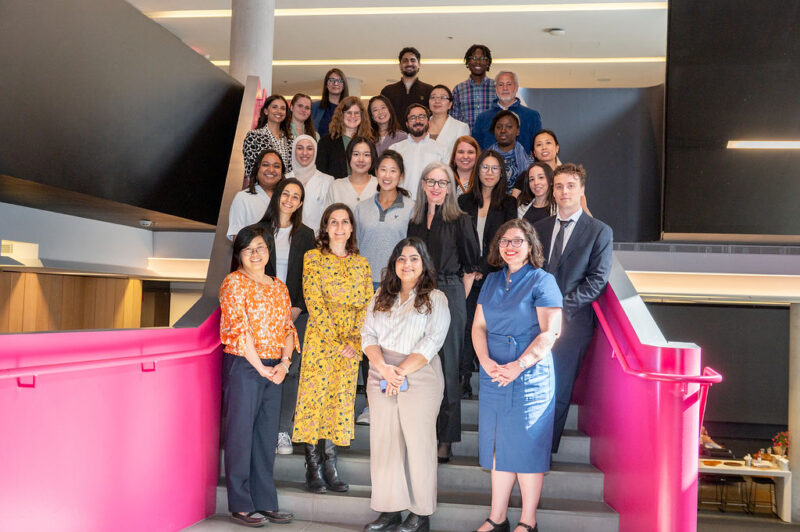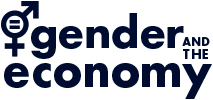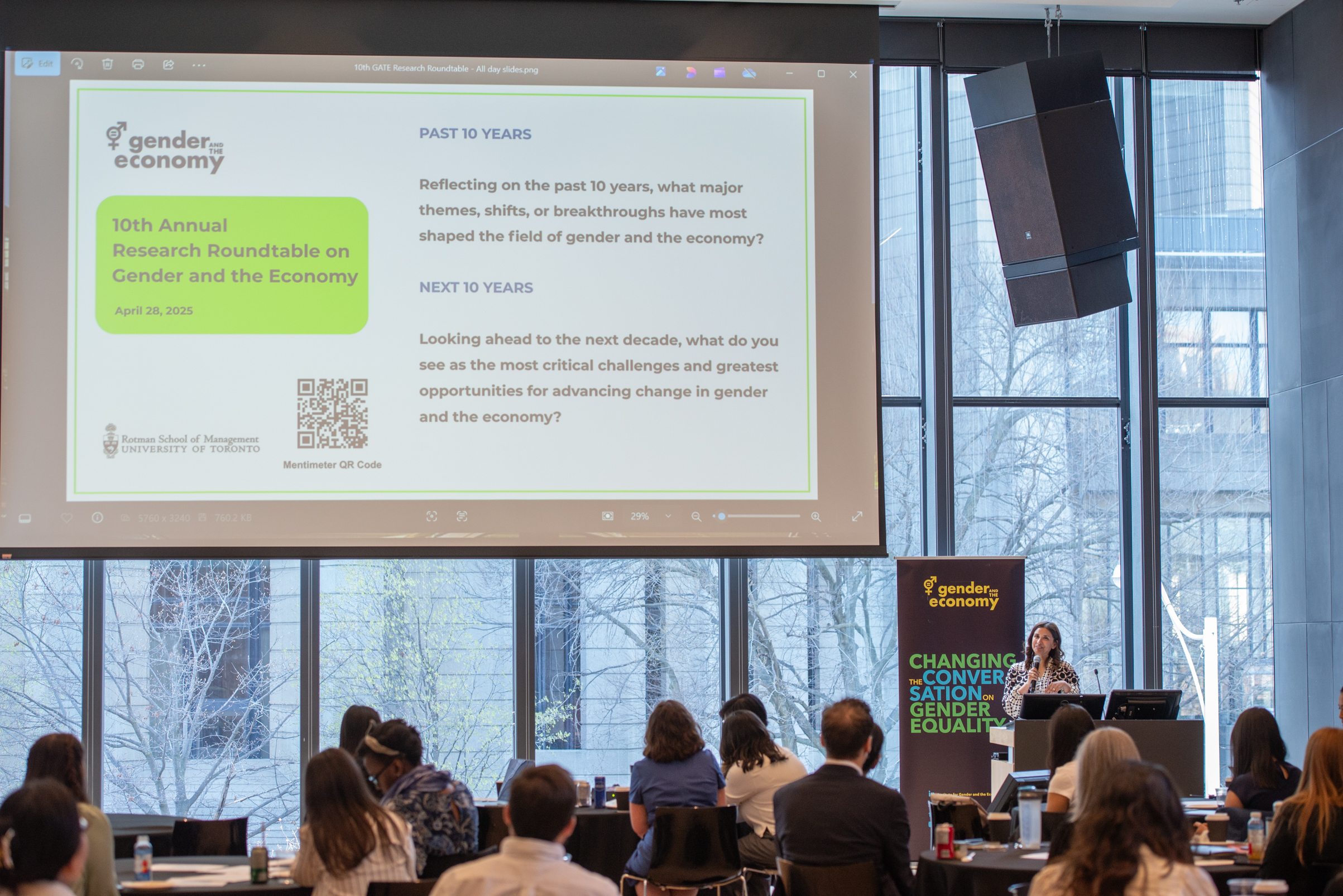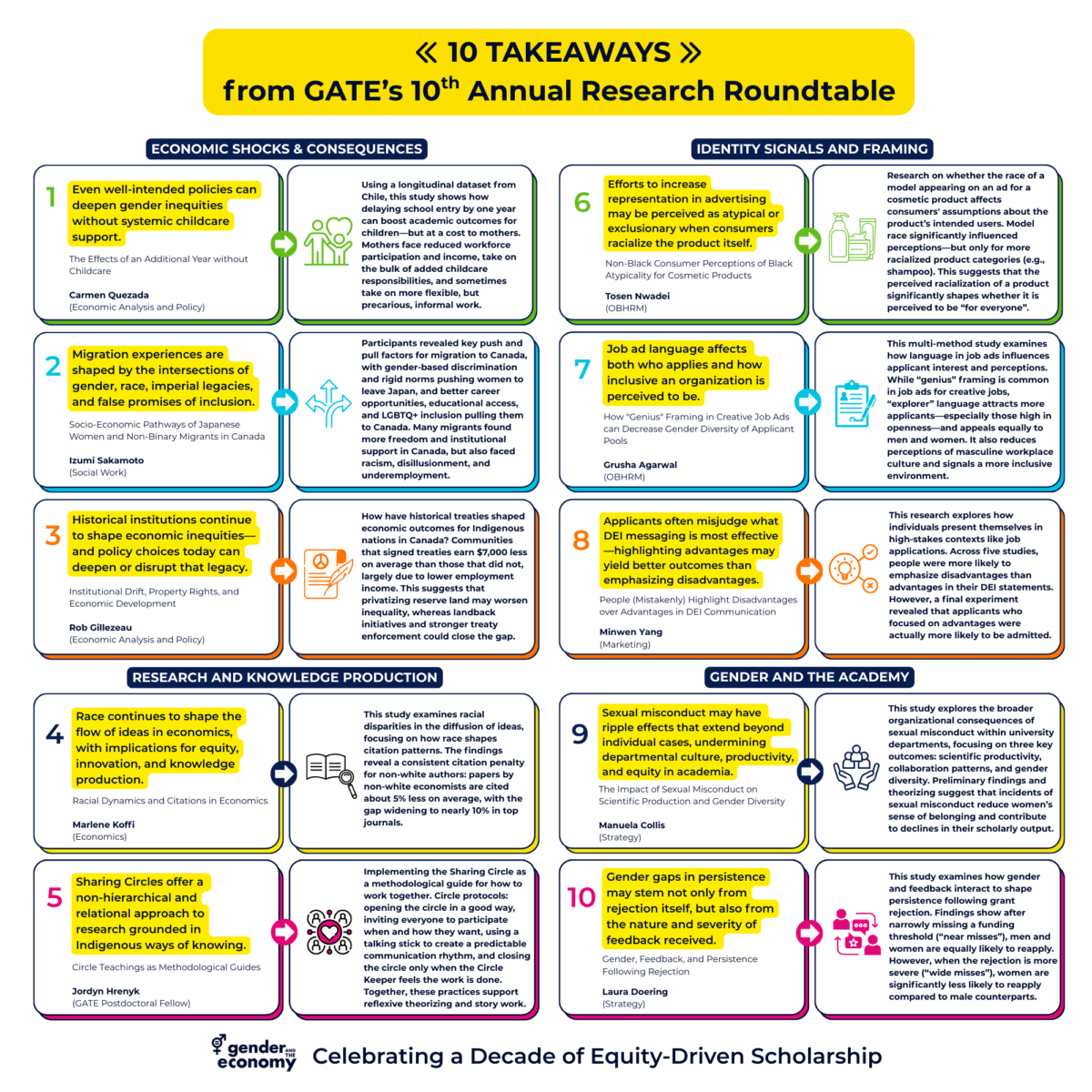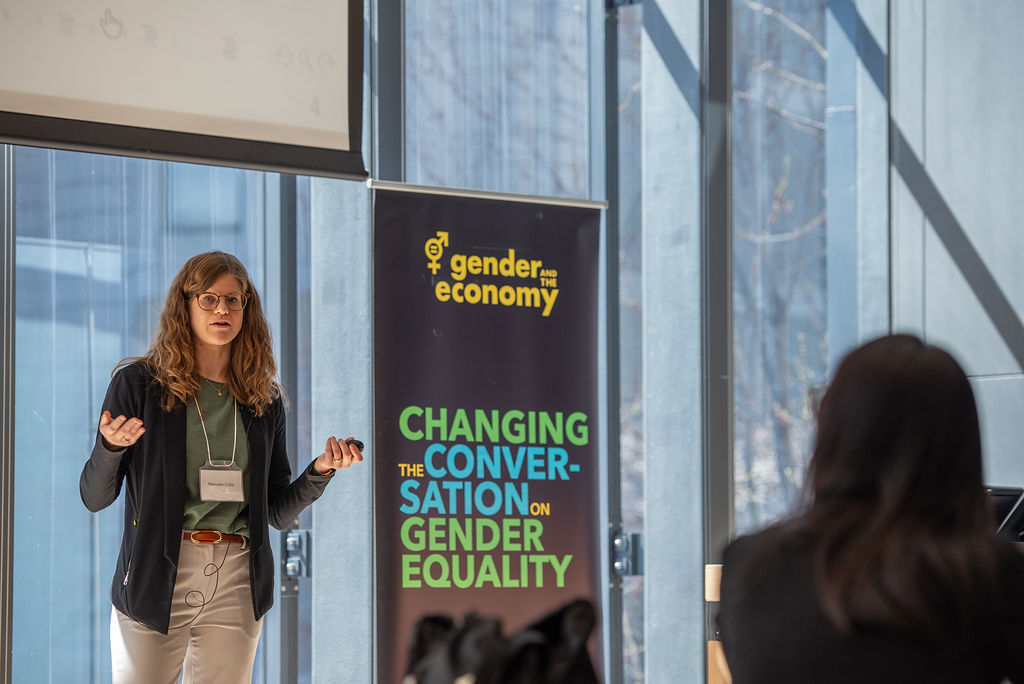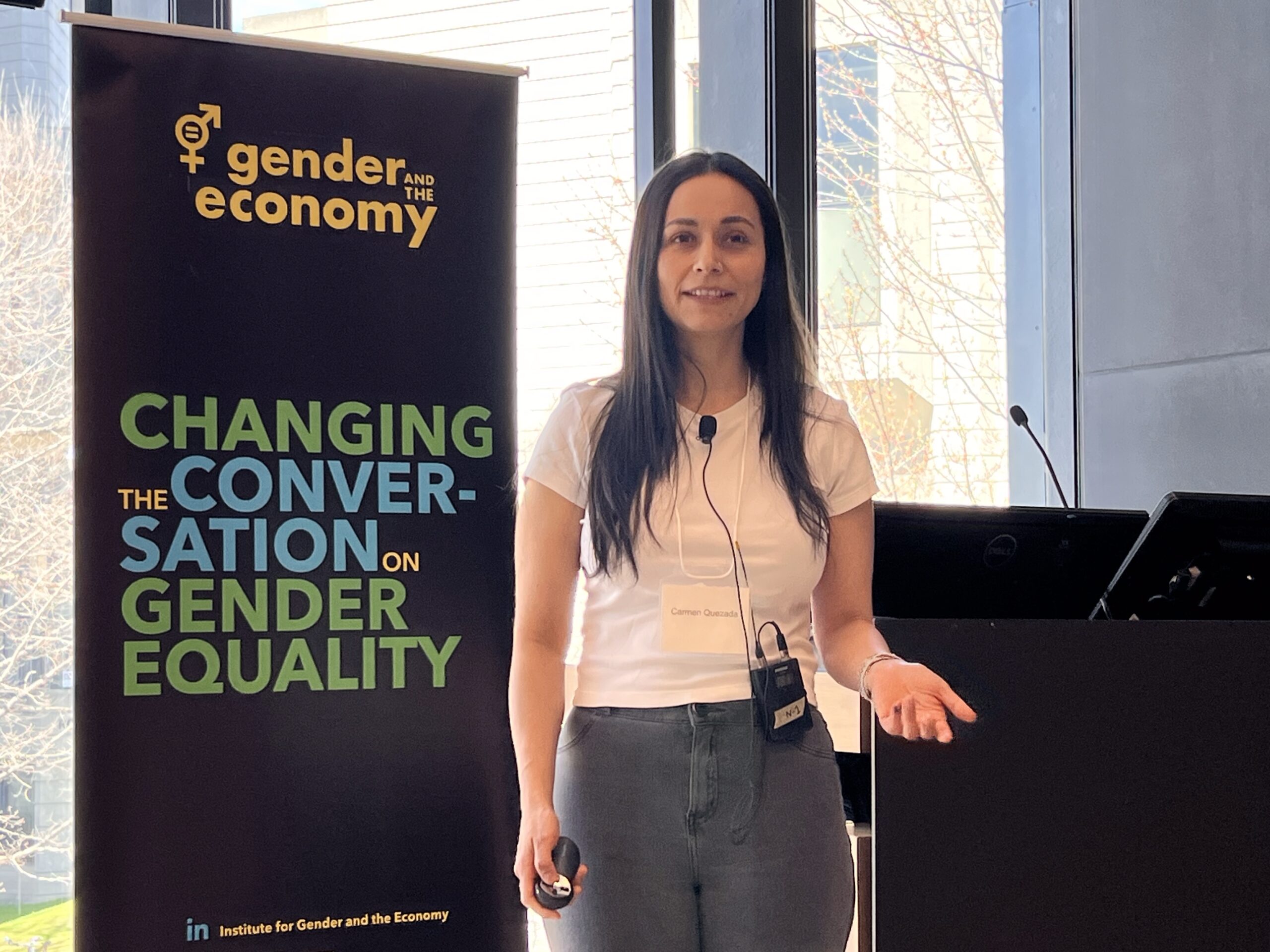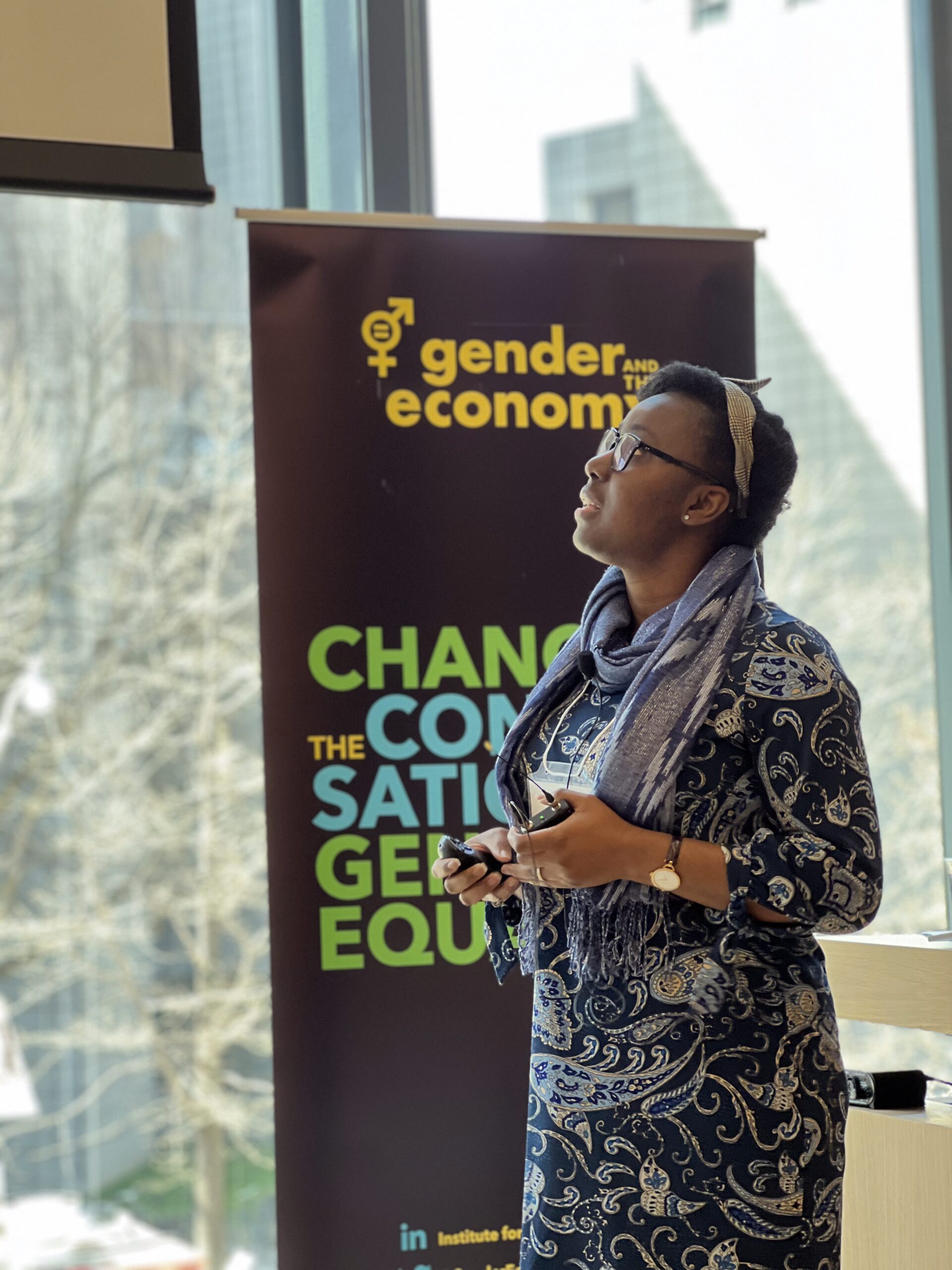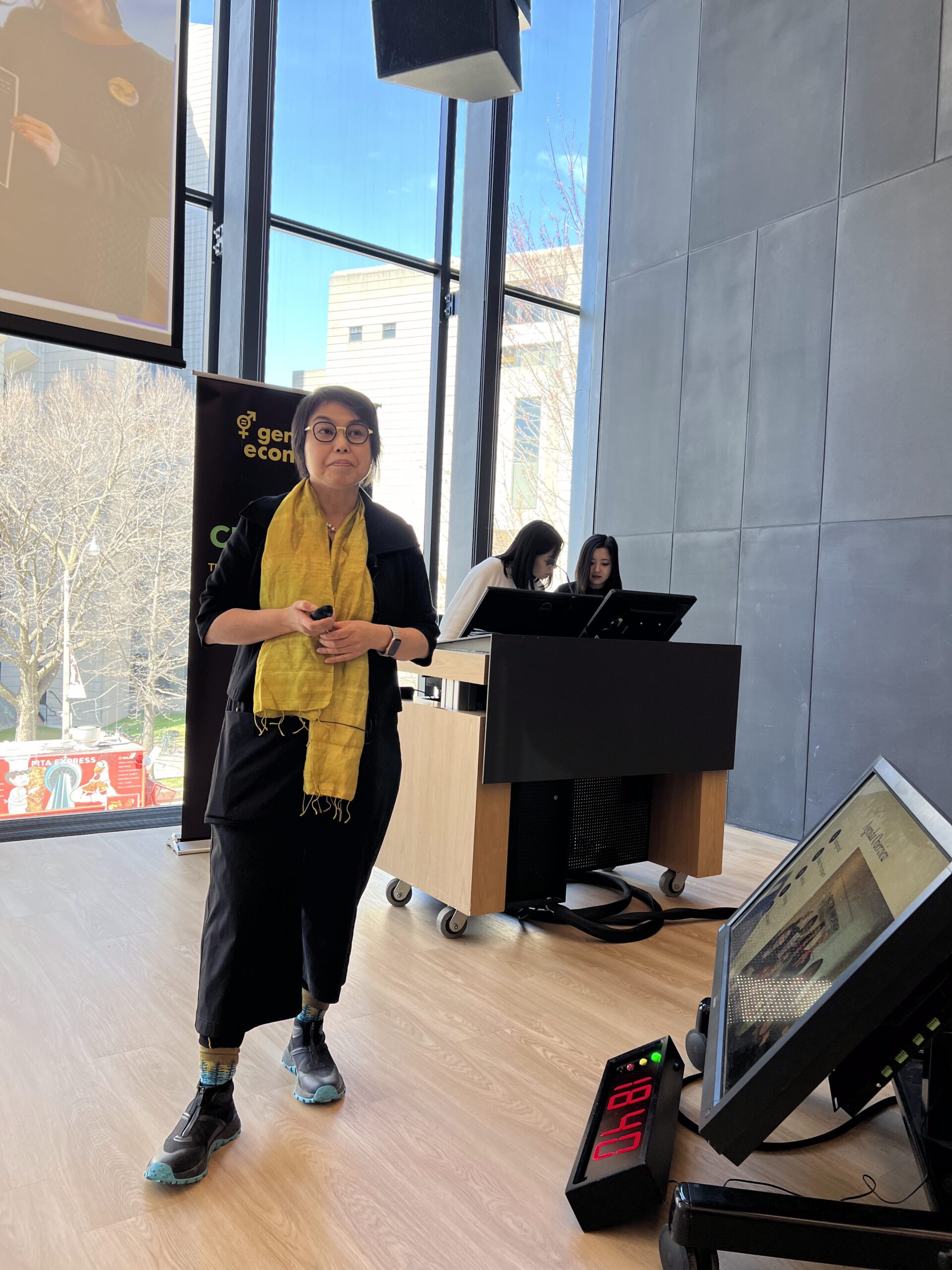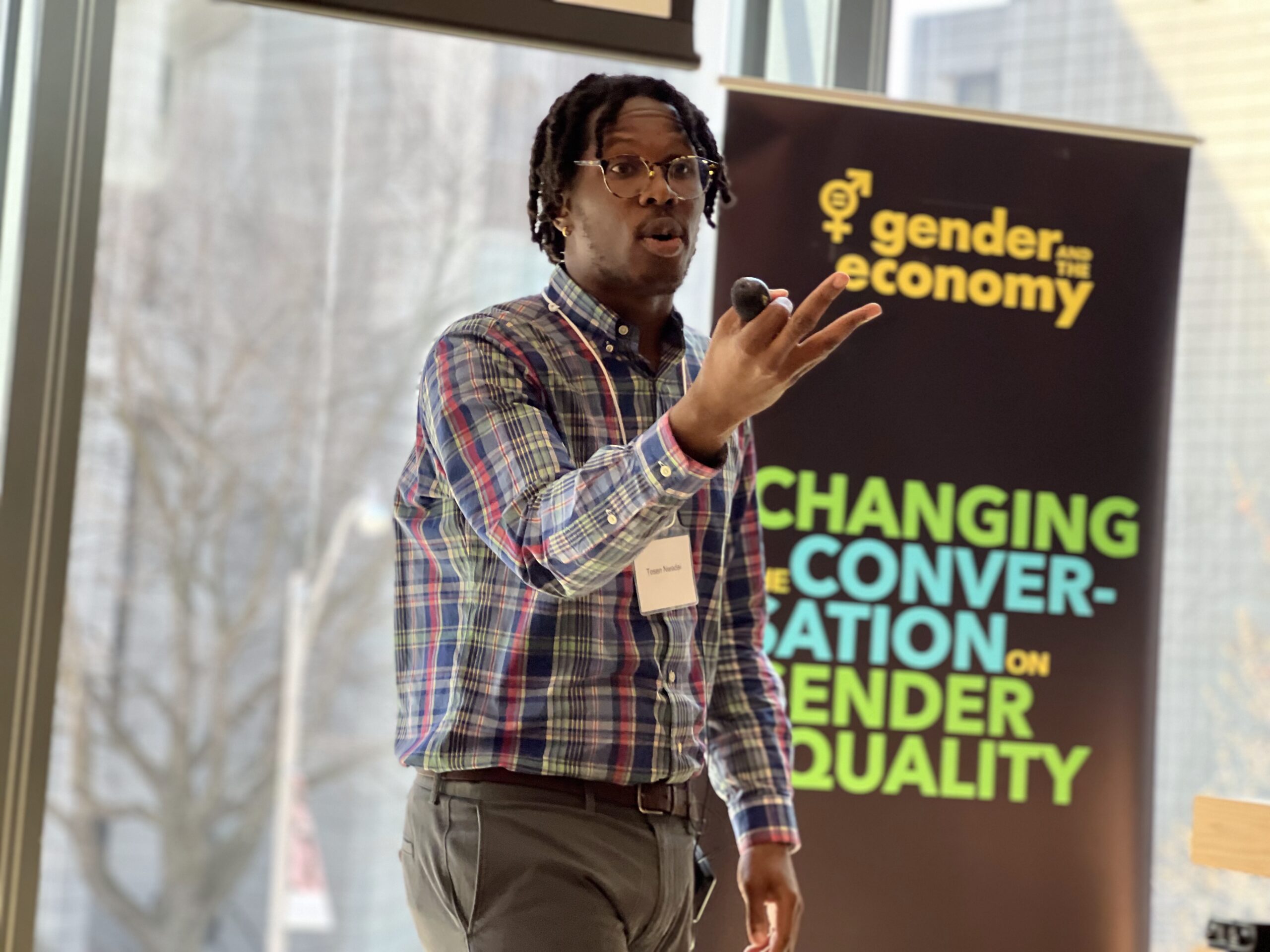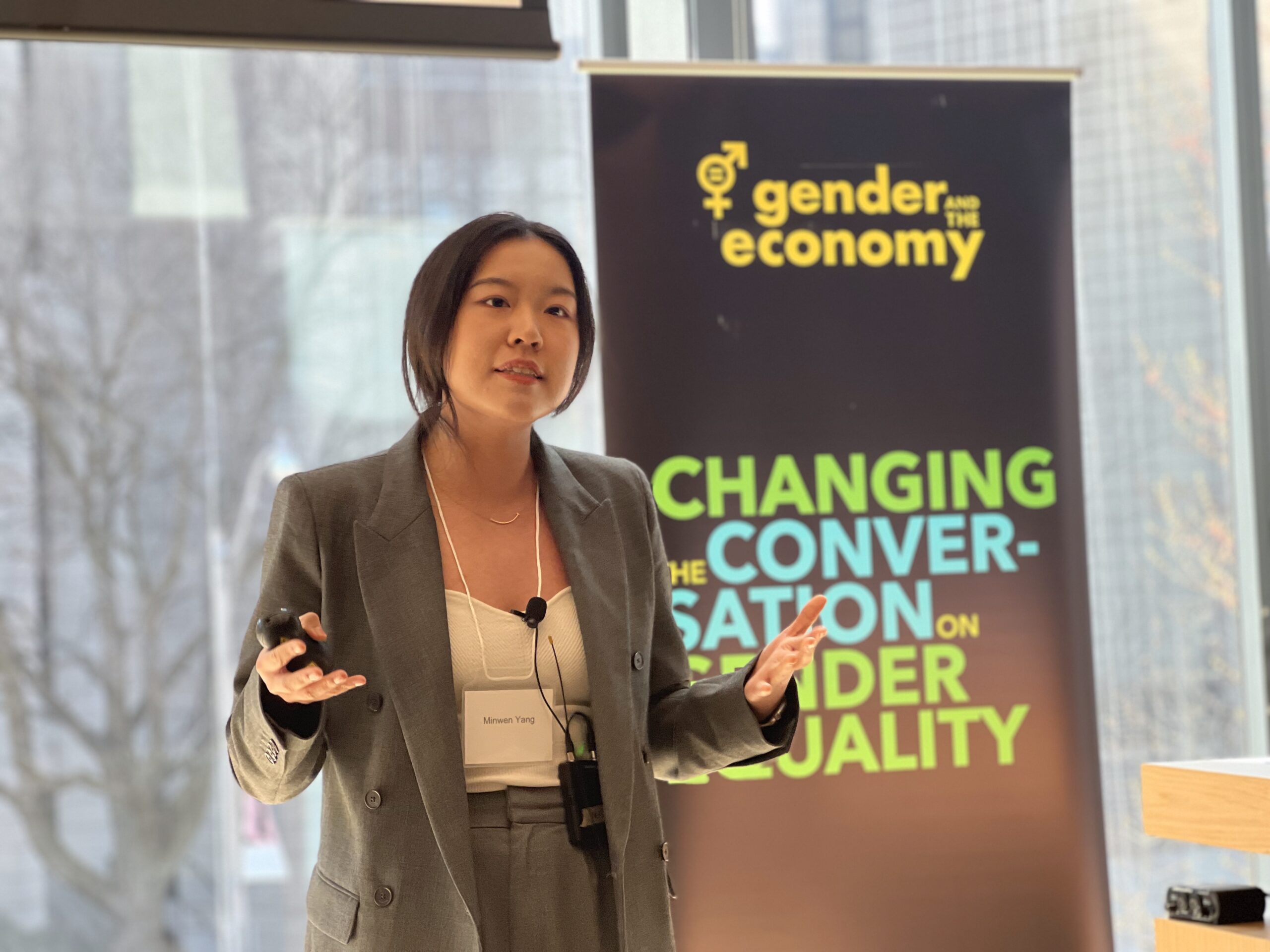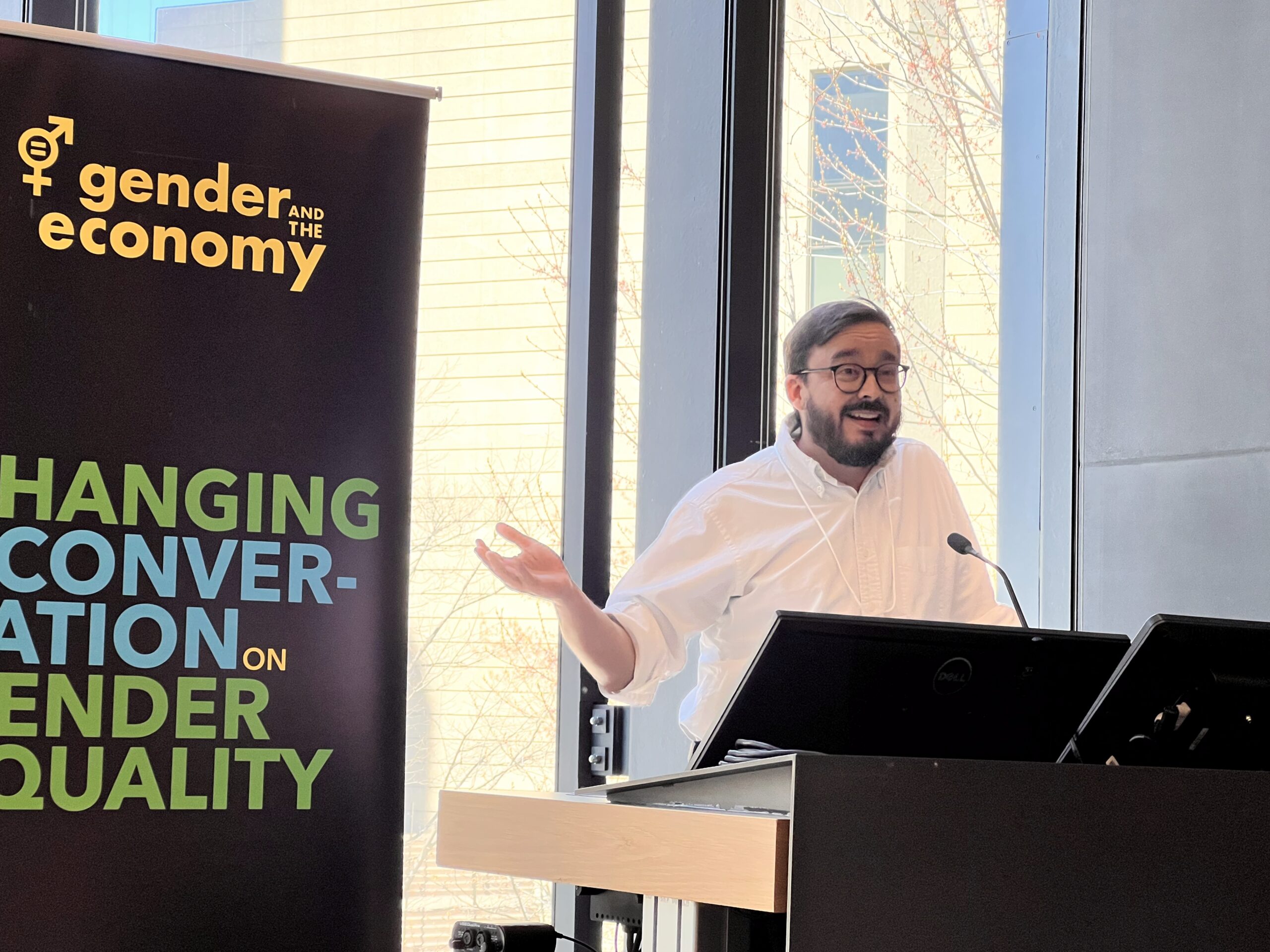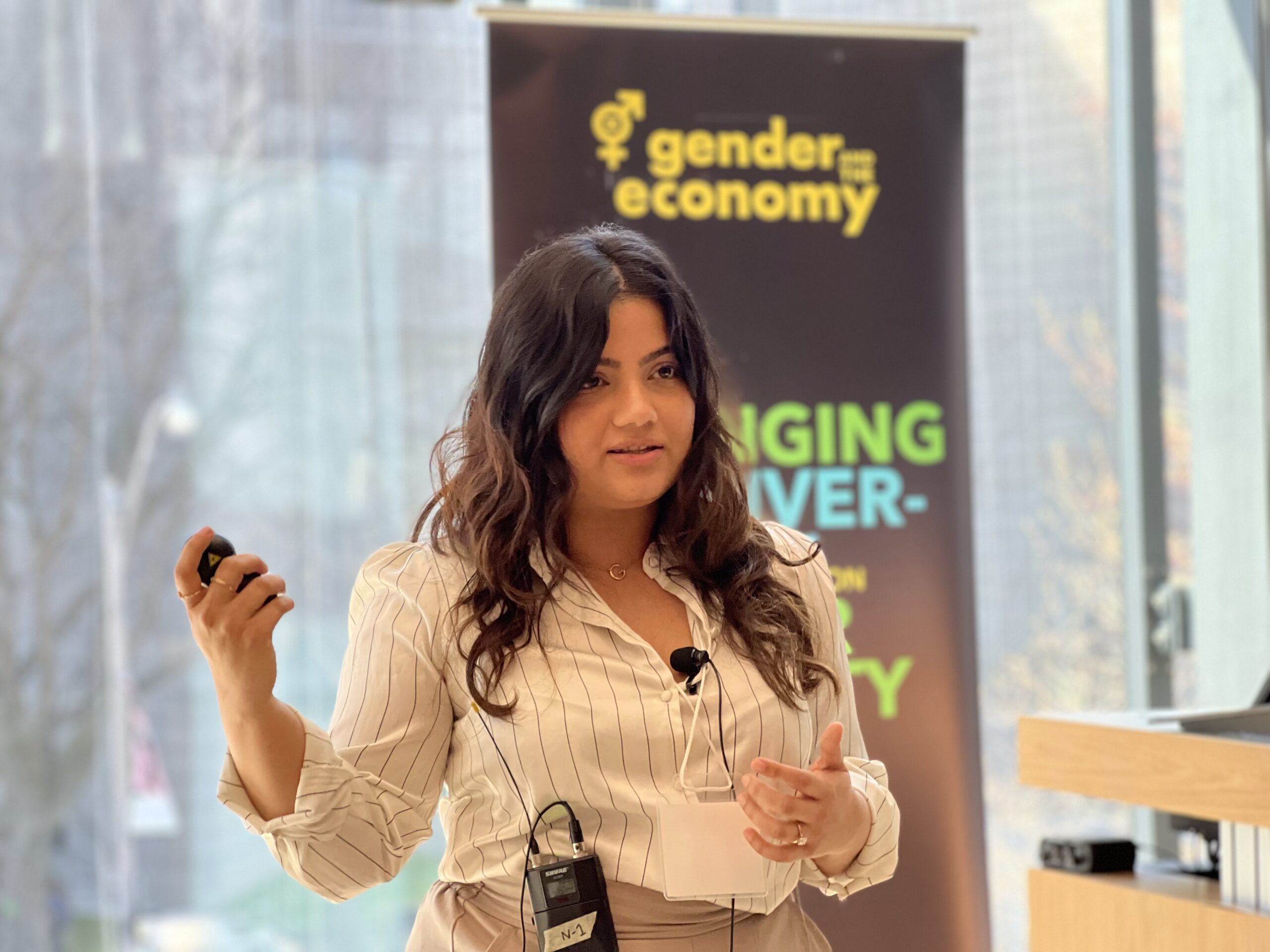GATE’s 10th annual research roundtable brought together a multidisciplinary group of emerging and established from across the University of Toronto—each funded through GATE research grants. Attendees shared bold new research, received valuable feedback, and built meaningful connections.
So, what did we learn?
We summarized the 10 research snapshots from our funded research on gender and the economy:
The Effects of an Additional Year without Childcare (Carmen Quezada, Economic Analysis and Policy):
Using a longitudinal dataset from Chile , this study shows how delaying school entry by one year can boost academic outcomes for children—but at a cost to mothers. Mothers face reduced workforce participation and income, take on the bulk of added childcare responsibilities, and sometimes take on more flexible, but precarious, informal work.
- Takeaway: Even well-intended policies can deepen gender inequities without systemic childcare support.
Socio-Economic Pathways of Japanese Women and Non-Binary Migrants in Canada (Izumi Sakamoto, Social Work):
Study participants revealed key push and pull factors for migration to Canada, with gender-based discrimination and rigid norms pushing women to leave Japan, and better career opportunities, educational access, and LGBTQ+ inclusion pulling them to Canada. Although many migrants found more freedom and institutional support in Canada, they also faced racism, disillusionment, and underemployment.
- Takeaway: Migration experiences are shaped by the intersections of gender, race, imperial legacies, and false promises of inclusion.
Institutional Drift, Property Rights, and Economic Development (Rob Gillezeau, Economic Analysis and Policy):
How have historical treaties shaped economic outcomes for Indigenous nations in Canada? Communities that signed treaties earn $7,000 less on average than those that did not, largely due to lower employment income. This suggests that privatizing reserve land may worsen inequality, whereas landback initiatives and stronger treaty enforcement could help close the gap.
- Takeaway: Historical institutions continue to shape economic inequities—and policy choices today can deepen or disrupt that legacy.
Racial Dynamics and Citations in Economics (Marlene Koffi, Economics):
This study examines racial disparities in the diffusion of ideas, focusing on how race shapes citation patterns. The findings reveal a consistent citation penalty for non-white authors: papers by non-white economists are cited about 5% less on average, with the gap widening to nearly 10% in top journals.
- Takeaway: Race continues to shape the flow of ideas in economics, with implications for equity, innovation, and knowledge production.
Circle Teachings as Methodological Guides (Jordyn Hrenyk, GATE Postdoctoral Fellow)
Drawing from their own experiences as Indigenous scholars working with non-Indigenous collaborators, , the researchers introduce the Sharing Circle as a methodological guide for how to work together. Circle protocols include: opening the circle in a good way, inviting everyone to participate when and how they want, using a talking stick to create a predictable communication rhythm, and closing the circle only when the Circle Keeper feels the work is done. Together, these practices support reflexive theorizing and story work.
- Takeaway: Sharing Circles offer a non-hierarchical and relational approach to research grounded in Indigenous ways of knowing.
Non-Black Consumer Perceptions of Black Atypicality for Cosmetic Products (Tosen Nwadei, OBHRM)
This study examines whether the race of a model who appears on an advertisement for a cosmetic product affects consumers’ assumptions about the product’s intended users. Model race significantly influenced perceptions—but only for more racialized product categories (e.g., shampoo). The results suggest that the perceived racialization of a product significantly shapes whether it is perceived to be “for everyone”.
- Takeaway: Efforts to increase representation in advertising may be perceived as atypical or exclusionary when consumers racialize the product itself.
How “Genius” Framing in Creative Job Ads can Decrease the Gender Diversity of Applicant Pools (Grusha Agarwal, OBHRM)
This multi-method study examines how language in job ads influences applicant interest and perceptions. While “genius” framing is common in job ads for creative jobs, “explorer” language attracts more applicants—especially those high in openness—and appeals equally to men and women. It also reduces perceptions of masculine workplace culture and signals a more inclusive environment.
- Takeaway: Job ad language affects both who applies and how inclusive an organization is perceived to be.
People (Mistakenly) Highlight Disadvantages over Advantages in DEI Communication (Minwen Yang, Marketing)
This research explores how individuals present themselves in high-stakes contexts like job applications. Across five studies, people were more likely to emphasize disadvantages than advantages in their DEI statements.
- Takeaway: Applicants often misjudge what DEI messaging is most effective—highlighting advantage may yield better outcomes than emphasizing disadvantage.
The Impact of Sexual Misconduct on Scientific Production and Gender Diversity (Manuela Collis, Strategy)
This study explores the broader organizational consequences of sexual misconduct within university departments, focusing on three key outcomes: scientific productivity, collaboration patterns, and gender diversity. Preliminary findings and theorizing suggest that incidents of sexual misconduct reduce women’s sense of belonging and contribute to declines in their scholarly output.
- Takeaway: Sexual misconduct may have ripple effects that extend beyond individual cases, undermining departmental culture, productivity, and equity in academia.
Gender, Feedback, and Persistence Following Rejection (Laura Doering, Strategy)
This study examines how gender and feedback interact to shape persistence following grant rejection—a key concern in addressing gender disparities in academia. The findings show that after narrowly missing a funding threshold (“near misses”), men and women are equally likely to reapply. However, when the rejection is more severe (“wide misses”), women are significantly less likely to reapply compared to their male counterparts.
- Takeaway: Gender gaps in persistence may stem not only from rejection itself, but also from the nature and severity of feedback received.
Download our infographic for 10 TAKEAWAYS from GATE’s 10th Annual Research Roundtable -PDF -12May2025
